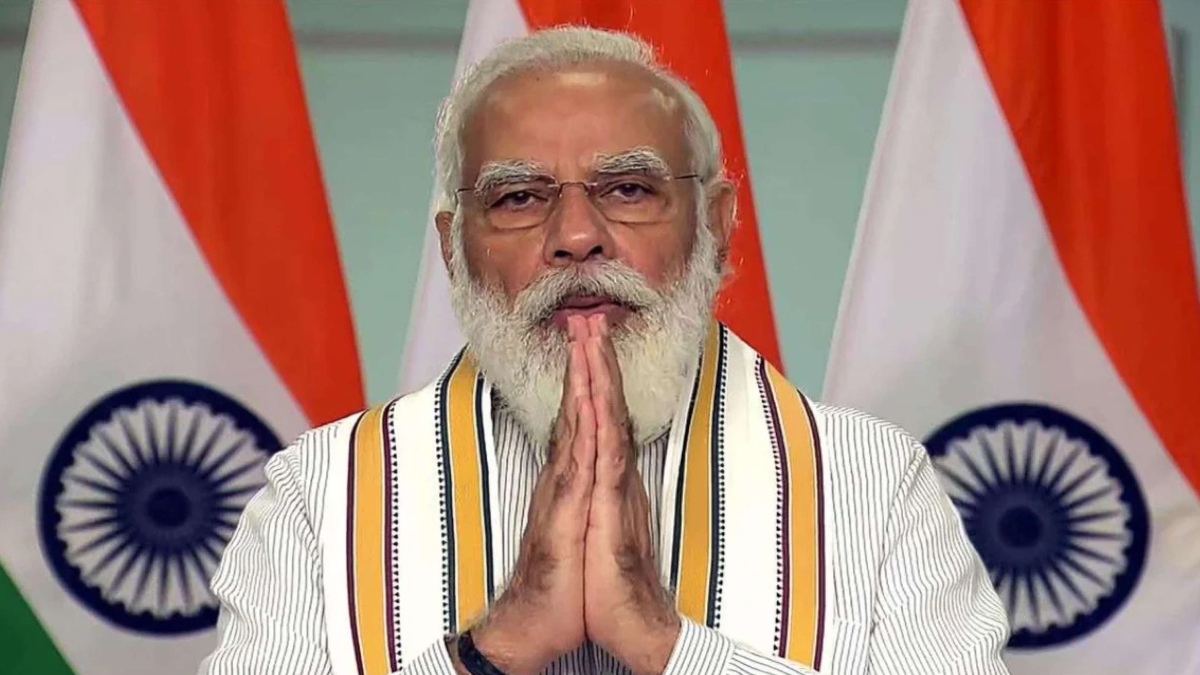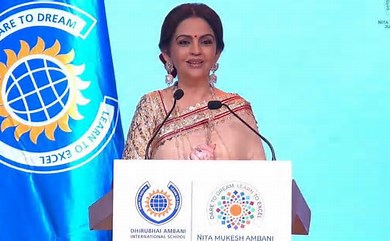On July 22, 2021, the Union Cabinet approved the Production Linked Incentive (PLI) scheme of Rs 6,322 crore for the Speciality Steel sector to create over 5.25 lakh jobs and attract Rs 39,625 crore worth of investment. This is yet another instance of Prime Minister Narendra Modi’s ‘Make in India’ initiative, setting the tone for an Aatmanirbhar Bharat and thereby reducing the dependence on the import of steel to fulfill the country’s needs. There is a cap as far as the incentive is concerned at Rs 200 crore per entity. This is a demand-driven scheme and it will fulfill the country’s need for steel and create multiple export opportunities.
Specialty Steel is used in some form or the other in air-conditioners, fridges, solar energy structures, high strength/wear-resistant products like construction equipment, armour bodies, specialty rails used in high-speed rails, alloy steel wires used in crankshaft walls, tyre tracks and of course electrical steel used in transformers or electric motors. The Modi government’s ambitious PLI scheme in Speciality Steel to attract an additional investment of Rs 40,000 crore will give employment to over 5.25 lakh people of which 68,000 will be by way of direct employment. The duration of the scheme will be for five years— from 2023-24 to 2027-28.
With a budgetary outlay of Rs 6322 crore, the scheme will lead to a capacity addition of 25 MT. Speciality Steel has been chosen as the target segment because out of the production of 102 million tonnes of steel in India in 2020-21, only18 million tonnes of value-added Steel/Speciality Steel was produced in the country. Apart from this, out of 6.7 million tonnes of imports of steel in 2020-21,4 million tonnes worth of import was of Specialty Steel alone, resulting in forex outgo of Rs 30,000 crore. By becoming Aatmanirbhar in producing Speciality Steel, India will move up the steel value chain and come at par with advanced steel making countries like South Korea and Japan.
It is also expected that the Speciality Steel production will become 42 million tonnes by the end of 2026-27. This will ensure that 2.5 lakh crore worth of Speciality steel will be produced and consumed in the country, which would otherwise have been imported. Similarly, the export of Specialty Steel will be over 5.5 million tonnes as against the current 1.7 million tonnes. The benefit of this scheme will accrue to both big players, as in, integrated steel plants, and to the smaller players (secondary Steel players) too.
Specialty Steel is value-added Steel wherein normal finished steel is worked upon by way of coating, plating, heat treatment, etc., to convert it into high value-added steel which can be used thereafter in various strategic applications like Defence, Space, Power, Automobile Sector and Specialized Capital Goods. There are 3 slabs of PLI incentives, the lowest being 4 per cent and highest being 12 per cent. The PLI scheme for Specialty Steel will ensure that the basic Steel used is ‘melted and poured’ within the country, which means that raw material (finished steel) used for making Specialty Steel will be made in India only, thereby ensuring that the scheme promotes an ‘end to end’ manufacturing within India.
The Modi government’s Production Linked Incentive (PLI) scheme for the food processing industry to support the creation of global food manufacturing champions commensurate with India’s natural resource endowments in the international markets with an outlay of Rs 10900 crore. The food processing sector in India encompasses manufacturing enterprises in all segments, from micro to large industries. India has a competitive advantage in terms of resource endowment, a large domestic market and scope for promoting value-added products.
Achieving full potential of this sector would require Indian companies to improve their competitive strength vis-à-vis their global counterparts in terms of the scale of output, productivity, value addition, and linkages with the global value chain. Supporting food manufacturing entities that seek expansion of processing capacity and improving brand equity abroad to incentivise the emergence of strong Indian brands is the key motive of PLI.
Increase in employment opportunities of off-farm jobs, ensuring remunerative prices of farm produce, and higher incomes to farmers are the other benefits of PLI.
For the promotion of Indian brands abroad, the scheme envisages grants to the applicant entities for in store branding, shelf space renting, and marketing. Scheme will be implemented over a six year period from 2021-22 to 2026-27. The scheme will be rolled out on an India basis and shall be implemented through a Project Management Agency (PMA). The PMA would, inter-alia, be responsible for appraisal of applications/ proposals, verification of eligibility for support, and scrutiny of claims eligible for disbursement of incentives. The scheme is “fund-limited”, i.e. cost shall be restricted to the approved amount. The maximum incentive payable to each beneficiary shall be fixed in advance at the time of approval of that beneficiary. Regardless of achievement/ performance, this maximum shall not be exceeded.
The implementation of this scheme would facilitate the generation of processed food output of Rs 33,494 crore and create employment for nearly 2.48 lakh persons by the year 2026-27 which is excellent news. The PLI scheme would be monitored at the Centre by the Empowered Group of Secretaries chaired by the Cabinet Secretary. The Inter-Ministerial Approval Committee (IMAC) would approve selection of applicants for coverage under the scheme, sanction, and release of funds as incentives. The concerned ministry will prepare an annual action plan covering various activities for the implementation of the scheme. A third-party evaluation and mid-term review mechanism would be built into the programme.
Outgo on incentives in next six years will be Rs 10,790 crore, increase in sales will be at Rs 1.20 lakh crore, incremental sales in 6th Year will be Rs 33,494 crore, cumulative additional investment will be Rs 6057 crore, increase in exports in 6 Years will be Rs 27,816 crore, increase in employment at end of Year-5 will be 2.5 lakh people per annum.
Apart from food processing ,South Korean company Samsung Electronics, Taiwan’s Pegatron and Foxconn and Singapore’s Flex are looking to either set up new units or expand the existing units to avail benefits under the PLI scheme for electronics. These companies have either received approval or are in the final stages of negotiations to benefit from the Ministry of Electronics and Information Technology’s (MeitY) production linked incentive (PLI) scheme, for making mobile phones and certain other specified electronic components. What exactly is a PLI scheme for electronics? Well, as a part of the National Policy on Electronics, the IT ministry had notified a scheme which would give incentives of 4-6 per cent to electronics companies which manufacture mobile phones and other electronic components such as transistors, diodes, thyristors, resistors, capacitors and nano-electronic components such as micro electro-mechanical systems.
According to the scheme, companies that make mobile phones which sell for Rs 15,000 or more will get an incentive of up to 6 per cent on incremental sales of all such mobile phones made in India. In the same category, for companies that are owned by Indian nationals and make such mobile phones, the incentive has been kept at Rs 200 crore for the next four years. The scheme will attract big foreign investment in the sector, while also encouraging domestic mobile phone makers to expand their units and presence in India. The PLI scheme will be active for five years with financial year (FY) 2019-20 considered as the base year for calculation of incentives. This means that all investments and incremental sales registered after FY20 shall be taken into account while computing the incentive to be given to each company.
For the first year, the total incentive to be given has been capped at Rs 5334 crore, while for the second and third years it has been kept at Rs 8064 and Rs 8425 crore, respectively. In the fourth year, the incentive will be hiked substantially to Rs 11,488 crore, while in the fifth and final year, the incentive to be distributed has been capped at Rs 7640 crore. The total incentives over five years have thus been kept at Rs 40,951 crore for the electronics sector. Which companies and what kind of investments will be considered? All electronic manufacturing companies which are either Indian or have a registered unit in India will be eligible to apply for the scheme. These companies can either create a new unit or seek incentives for their existing units from one or more locations in India.
Any additional expenditure incurred by companies on plant, machinery, equipment, research and development, and transfer of technology for the manufacture of mobile phones and related electronic items will be eligible for the incentive scheme. However, all investment done by companies on land and buildings for the project will not be considered for any incentives or determine the eligibility of the scheme. Apart from new players, companies such as LG India— which already have manufacturing units in India— have also shown interest in the scheme. In the budget-category phone segment also, companies such as Lava, Dixon, and Karbonn have applied to give a further boost to Prime Minister Narendra Modi’s vision of an empowered, aspirational and transformative India.
Beyond the technicalities, the PLI scheme is aimed at reducing the compliance burden, further improving the ease of doing business (EODB), cutting down logistical costs for various industry segments, and is expected to increase the country’s production by $520 billion in the next five years. In the current year’s Budget, about Rs 2 lakh crore was earmarked for the PLI scheme with a focus on job creation. An average of 5 percent of production is given as incentive. Over the past 6-7 years, several successful efforts have been made to encourage ‘Make in India’ at different levels and the PLI scheme is at the forefront of indigenisation.
PM Modi has on umpteen occasions, stressed the need to take a big leap forward in terms of self-reliance, as well as to increase the speed and scale of local manufacturing, by creating multi-modal infrastructure to reduce logistics costs and constructing district-level export hubs.
The government, Modi said, believes that its interference in everything creates more problems than solutions and “therefore, self-regulation, self-attesting, self-certification are being emphasised”.
“We have to attract cutting-edge technology and maximum investment in the sectors related to our core competency,” the PM added.
Underlining the difference between the earlier schemes and those of the current government, the Prime Minister said that earlier, industrial incentives used to be open-ended, input-based subsidies, but now they have been made targeted and are performance-based through a competitive process. About PLI benefits,13 sectors have been brought under the ambit of this scheme and it would benefit the entire ecosystem associated with these sectors. With PLI in Auto and Pharma, there will be very less foreign dependence related to auto parts, medical equipment and raw materials of medicines. The energy sector will be modernised in the country with the help of advanced cell batteries, solar PV modules, and Specialty Steel, and the PLI for the textile and food processing sectors will benefit the entire agriculture sector as well.
Even during the pandemic last year fresh investment of over Rs 1300 crore was seen in the mobile manufacturing and electronic sectors, creating thousands of new jobs. On a different note, the United Nations has declared 2023 as the International Year of Millets and more than 70 countries came forward to support India’s proposal and unanimously accepted it in the UN General Assembly. This is a big opportunity for our farmers, which will get added traction, thanks to the PLI scheme in the food processing sector.
Again, IT Hardware is estimated to achieve Rs 3 lakh crore worth of production in the next four years and domestic value addition is expected to rise from the current range of 5-10 per cent to a far higher range of 20-25 per cent in next five years. Similarly, Telecom equipment manufacturing will witness an increase in value addition of about Rs 2.5 lakh crore in the next five years alone. In the Pharma sector, there is an expectation of more than Rs 15,000 crore investment in the next 5-6 years under PLI, which will lead to Rs 3 lakh crore by way of added Pharma sales and a massive rise in Pharma exports of over Rs 2 lakh crore. Further, trust has increased in Indian medicines, medical professionals, and equipment across the world, especially after the development of Covaxin, produced jointly by the Indian Council of Medical Research (ICMR) and Bharat Bio-Tech, in a fitting tribute to Indian scientists and of course the political courage of conviction of PM Modi, who has always encouraged scientific temper. It would be apt to conclude with a quote by Prime Minister Narendra Modi who recently said: “Time for phrases like ‘Hota Hai-Chalta Hai’ is now a matter of the past. India is growing rapidly and the world has high expectations from us. We cannot let this opportunity go”.
The writer is an economist, national spokesperson of the BJP, and the bestselling author of ‘Truth & Dare: The Modi Dynamic’. The views expressed are personal.







